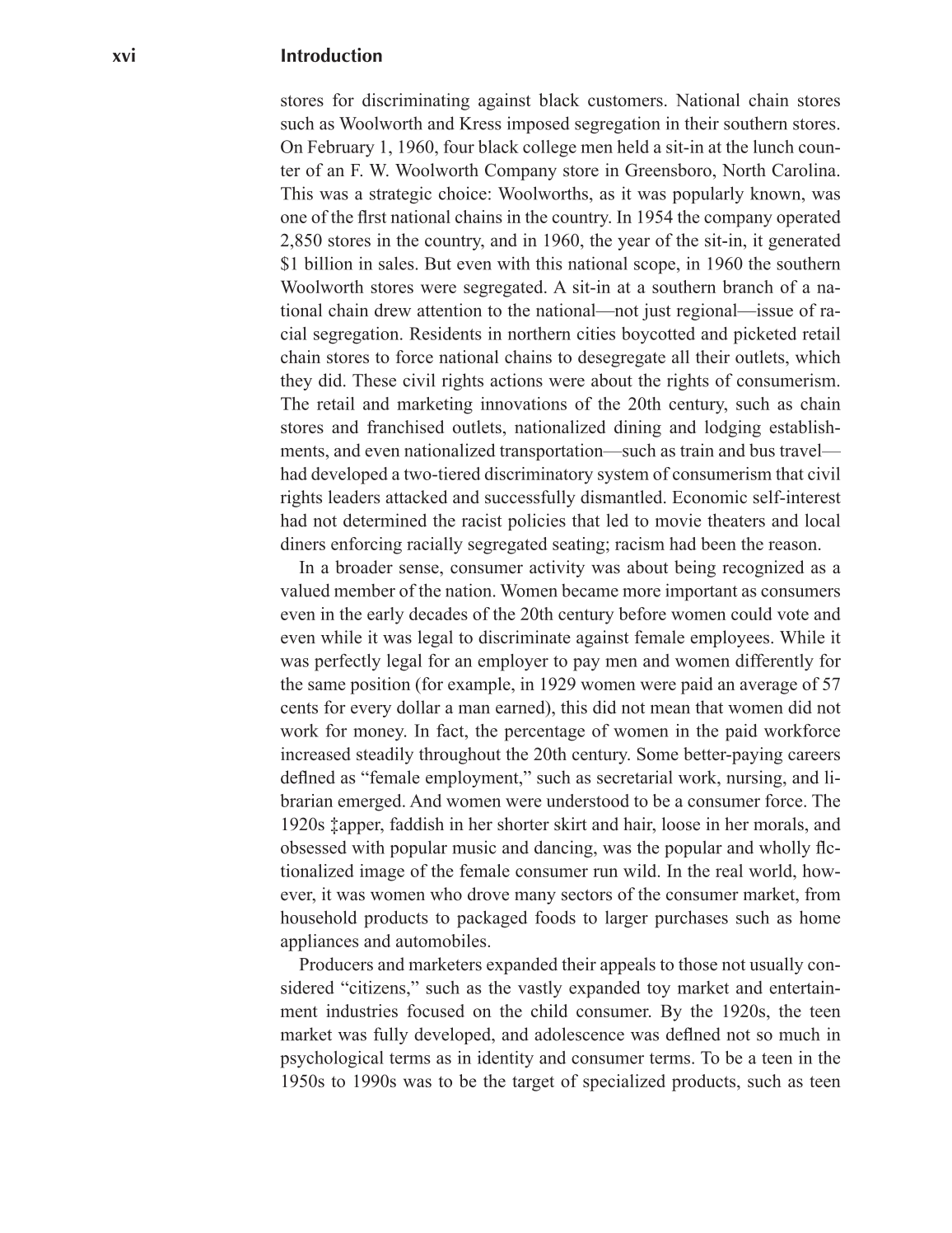xvi Introduction
stores for discriminating against black customers. National chain stores
such as Woolworth and Kress imposed segregation in their southern stores.
On February 1, 1960, four black college men held a sit-in at the lunch coun-
ter of an F. W. Woolworth Company store in Greensboro, North Carolina.
This was a strategic choice: Woolworths, as it was popularly known, was
one of the first national chains in the country. In 1954 the company operated
2,850 stores in the country, and in 1960, the year of the sit-in, it generated
$1 billion in sales. But even with this national scope, in 1960 the southern
Woolworth stores were segregated. A sit-in at a southern branch of a na-
tional chain drew attention to the national—not just regional—issue of ra-
cial segregation. Residents in northern cities boycotted and picketed retail
chain stores to force national chains to desegregate all their outlets, which
they did. These civil rights actions were about the rights of consumerism.
The retail and marketing innovations of the 20th century, such as chain
stores and franchised outlets, nationalized dining and lodging establish-
ments, and even nationalized transportation—such as train and bus travel—
had developed a two-tiered discriminatory system of consumerism that civil
rights leaders attacked and successfully dismantled. Economic self-interest
had not determined the racist policies that led to movie theaters and local
diners enforcing racially segregated seating; racism had been the reason.
In a broader sense, consumer activity was about being recognized as a
valued member of the nation. Women became more important as consumers
even in the early decades of the 20th century before women could vote and
even while it was legal to discriminate against female employees. While it
was perfectly legal for an employer to pay men and women differently for
the same position (for example, in 1929 women were paid an average of 57
cents for every dollar a man earned), this did not mean that women did not
work for money. In fact, the percentage of women in the paid workforce
increased steadily throughout the 20th century. Some better-paying careers
defined as “female employment,” such as secretarial work, nursing, and li-
brarian emerged. And women were understood to be a consumer force. The
1920s flapper, faddish in her shorter skirt and hair, loose in her morals, and
obsessed with popular music and dancing, was the popular and wholly fic-
tionalized image of the female consumer run wild. In the real world, how-
ever, it was women who drove many sectors of the consumer market, from
household products to packaged foods to larger purchases such as home
appliances and automobiles.
Producers and marketers expanded their appeals to those not usually con-
sidered “citizens,” such as the vastly expanded toy market and entertain-
ment industries focused on the child consumer. By the 1920s, the teen
market was fully developed, and adolescence was defined not so much in
psychological terms as in identity and consumer terms. To be a teen in the
1950s to 1990s was to be the target of specialized products, such as teen




























































































































































































































































































































































































